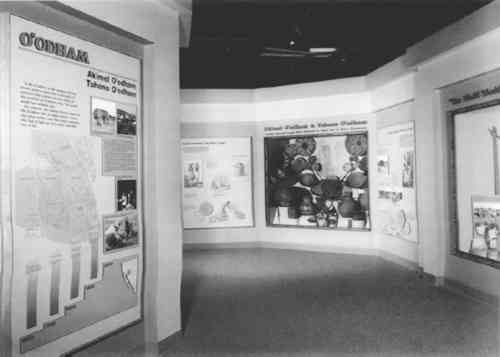ARTISTS' INTENT: MATERIAL CULTURE STUDIES AND CONSERVATIONNANCY ODEGAARD
6 AN EVOLVING APPROACHIn 1987, the Arizona State Museum began planning for a new permanent exhibit of its
In the Arizona State Museum Conservation Section, contextual information has always been critical to conservation treatment, but the process of obtaining and including it has changed. During the planning of Paths of Life, it became evident that the project would require the efforts of more than one conservator, as the single conservator also had to manage, develop, and maintain all the other conservation activities of the museum. With the help of a conservation technician, narrative condition and technology summaries were completed for each selected object. Relevant copies of accession and catalog information as well as curatorial and archival notes and photographs were made. Published information on material composition, fabrication techniques Discussion questions regarding cleaning, stabilization, repairs, or alterations in appearance were also developed. Most often, the conservation actions involved examination and adjustments that would ensure object stability or help clarify the aspect of interpretation or context that was being presented in the exhibit. When an object required more extensive conservation, it was discussed further. In the process of evaluating objects for the exhibit, the conservation documentation process seemed to become more detailed and more subjective. Our treatment approach was biased by the cultural, curatorial, and archival information we had at the time. We had to continually ask ourselves at what point the treatment was done and why. Consciously recording relevant aspects of the object's condition with aspects of its cultural, technological, collection, and museum history afforded us the opportunity to rethink what we were preserving, or more important, what we were potentially altering. Preserving what the object means in a humanistic way became the point. In researching treatment strategies, we recognized that different conservators may treat similar objects in very different ways based on the degree of cultural background they have. At worst, selective cleaning may remove intentional contrasts that threaten to unbalance the piece; consolidation or coatings may re-present the surface; and loss compensation may in fact overfinish the piece. During the implementation phase of Paths of Life, hiring of an assistant conservator was not feasible. A postgraduate intern funded through the Getty Grant Program and five graduate conservation interns from the University of Delaware-Winterthur, Buffalo State College, and Queens University programs worked on this project from 1991 through 1994. They did not have specific backgrounds that included knowledge of these cultures or exposure to these types of objects. Thus, the binders of previously gathered cultural and technical information were both time saving and essential to the actual conservation treatment process. As specific problems such as degree of cleaning, consolidation, or loss compensation were presented, the collections curator, Native American advisers, and scholars were consulted. Our best information came when all of these people could meet and work out practical answers together. |
